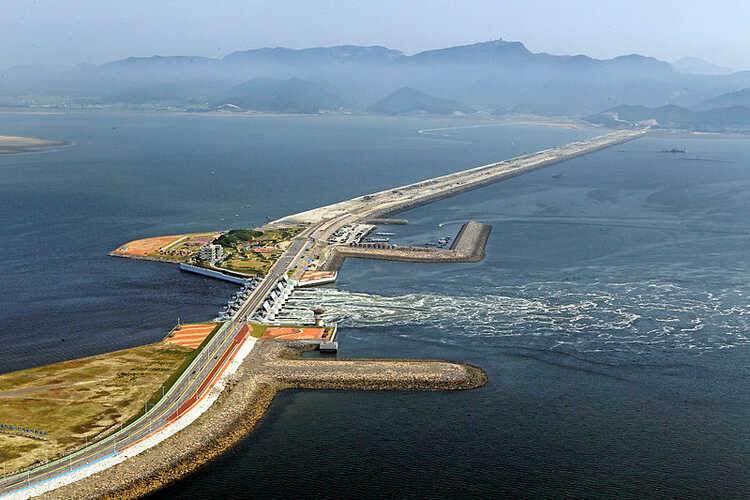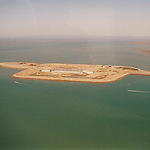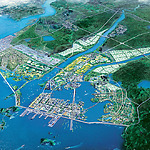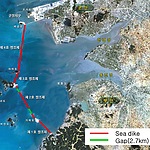It took a lot of headaches to get things moving in the three weeks that we had, but in the end we succeeded. In addition, we made general plans for four larger reclamations and a more detailed plan for the Shiwa area (twelve kilometres of sea dike in seven meters of tide and 20,000 hectares of land reclamation), close to Seoul.
The reclamations in South Korea are located along the west and south coasts where there are many islands and bays. There is a siltation of about two to three centimetres per year, making very fertile soil available. One problem is that the tide rises to about seven meters from South to North, so that large sea dikes with drainage sluices are needed to close off a bay before reclamation can begin. For the reclamation, inner dikes and an inland lake are usually constructed. This inland lake is used to supply irrigation water and collect excess water, before discharging it to the sea through the discharge sluices at low tide.
There is a great need for land in South Korea, because the country is very densely populated, and the living area is small due to the many mountains. The population density is therefore one of the highest in the world, at around 2,500 people per square kilometre - about five times as much as in our country. As a result, land prices are very high, making land reclamation attractive from an economic point of view.
There is great appreciation for Dutch know how and expertise in the field of hydraulic engineering and land reclamation and there are many contacts, both between governments and the business community. Around 2000, these contacts with the Civil Engineering Division of Rijkswaterstaat were very intensified and this had a special reason. The largest land reclamation project then in progress, the Saemangeum project, had been at a standstill for two years. This project involved the construction of a sea dike of 33.9 kilometres in six meters of tide and 30,000 hectares of land reclamation. Two-thirds of the sea dike was already constructed. The project's halt was the result of strong opposition to the project, mainly due to environmental objections.
This opposition was partly fuelled by the fact that the water quality in the Shiwa area, where the sea dike had been completed for a number of years, left much to be desired. Two rivers discharge into the Shiwa inland lake, which initially received poorly treated wastewater from some industrial estates around Seoul. In fact, this is not a reclamation problem, but a water quality problem that became clear when the sea dike was completed. Previously, the water mixed quickly with the sea water due to the large tidal difference.
We were then approached by the Koreans to explain in particular how decision-making regarding such projects takes place in the Netherlands. They had also done the same in Japan, where they had, and actually still have to deal with similar problems. Another reason was that in Korea there was a perception that we were flooding many polders in the Netherlands and that, among other things, we had opened the Enclosing Dam again. We initially did not understand this, but it turned out to be a translation error and it concerned a summer dike along River Waal for the nature reserve De Blauwe Kamer. We guided two delegations to the relevant locations and had in depth discussions and presentations. I drove over the entire Enclosing Dam with one of the delegations, because they wanted to be sure that a hole had not been made in it somewhere.
In 2003, I was invited to testify as an expert on behalf of the Korean Government Agency responsible for the project during a lawsuit about the possible completion of the construction of the sea dike. In the days preceding the trial, I was extensively instructed on what was and was not covered, and how I could make my presentation as clear as possible. In fact an interesting exercise. I do my presentation through an interpreter in court. Then I am questioned by the judge and the opposing lawyer. At one point our interpreter couldn't figure it out anymore. Fortunately, the other party's interpreter – who apparently understood it better – came to the rescue and took over the translation work. I have thanked him very much afterwards.
A few months later, the Korean government decided to further implement the Saemangeum project, which has now largely been completed. This means that our Enclosing Dam is no longer the longest sea dike in the world, because the Saemangeum dike is almost two kilometres longer.



